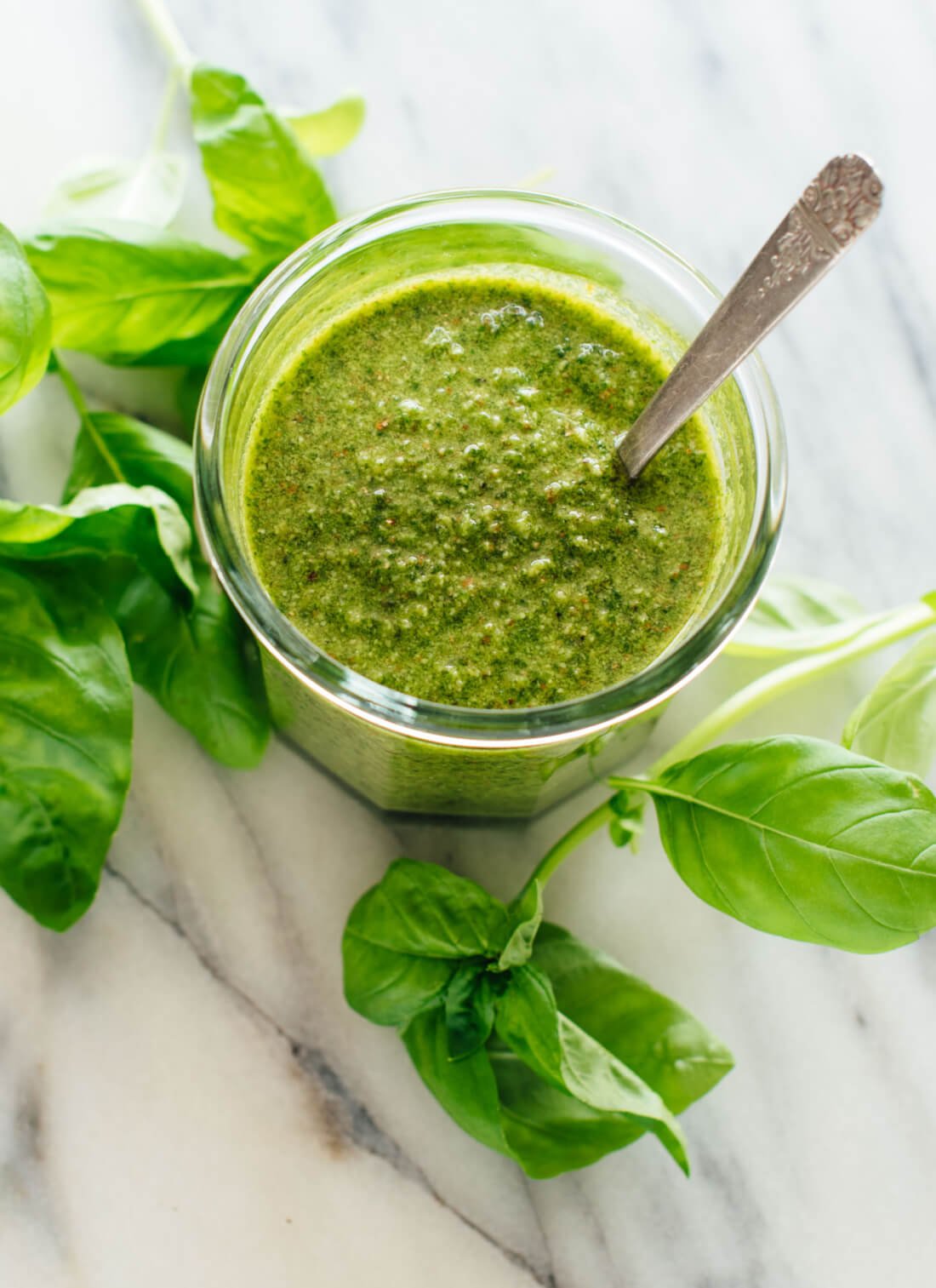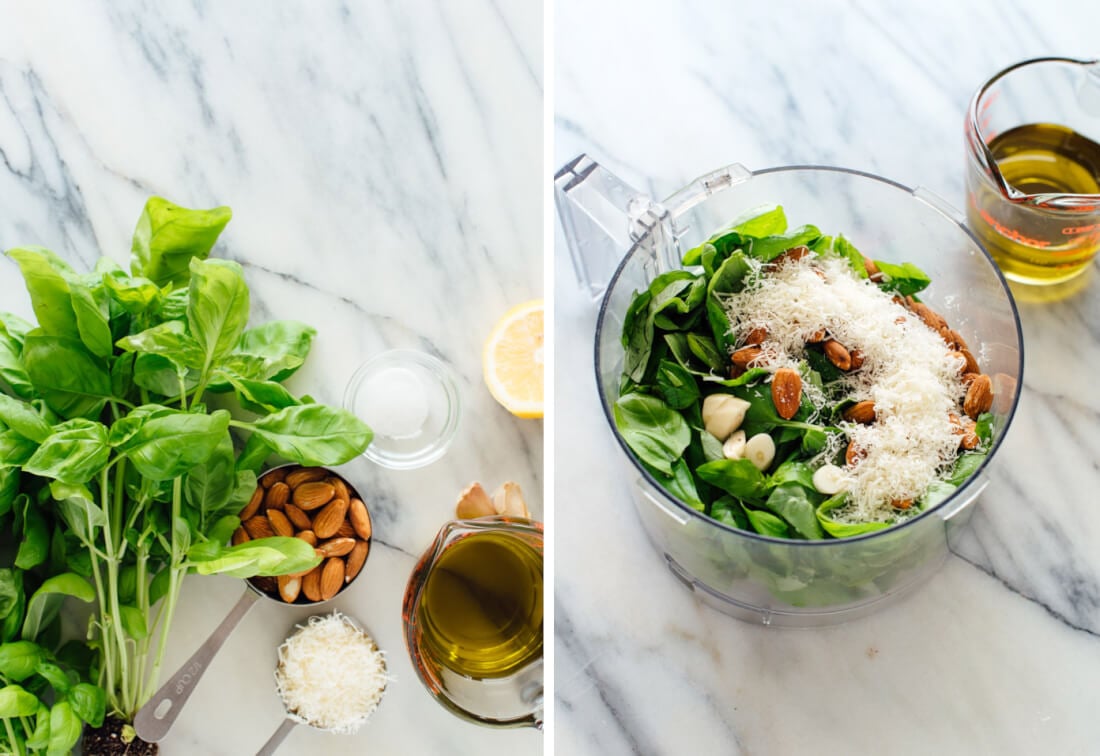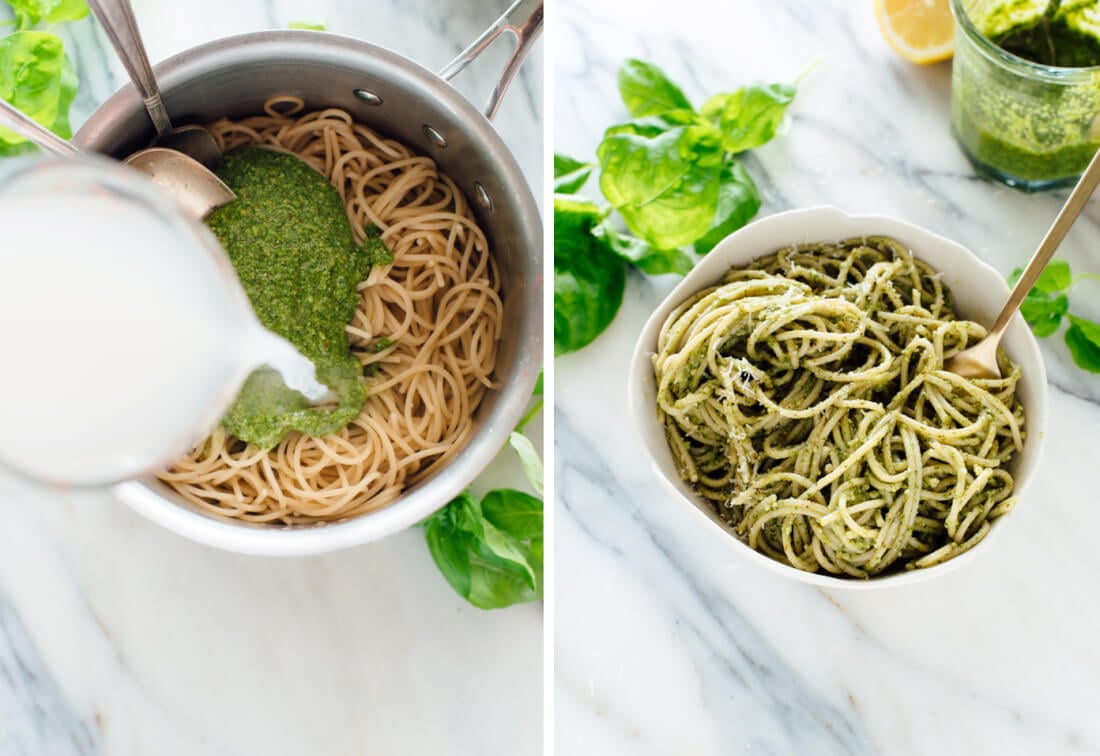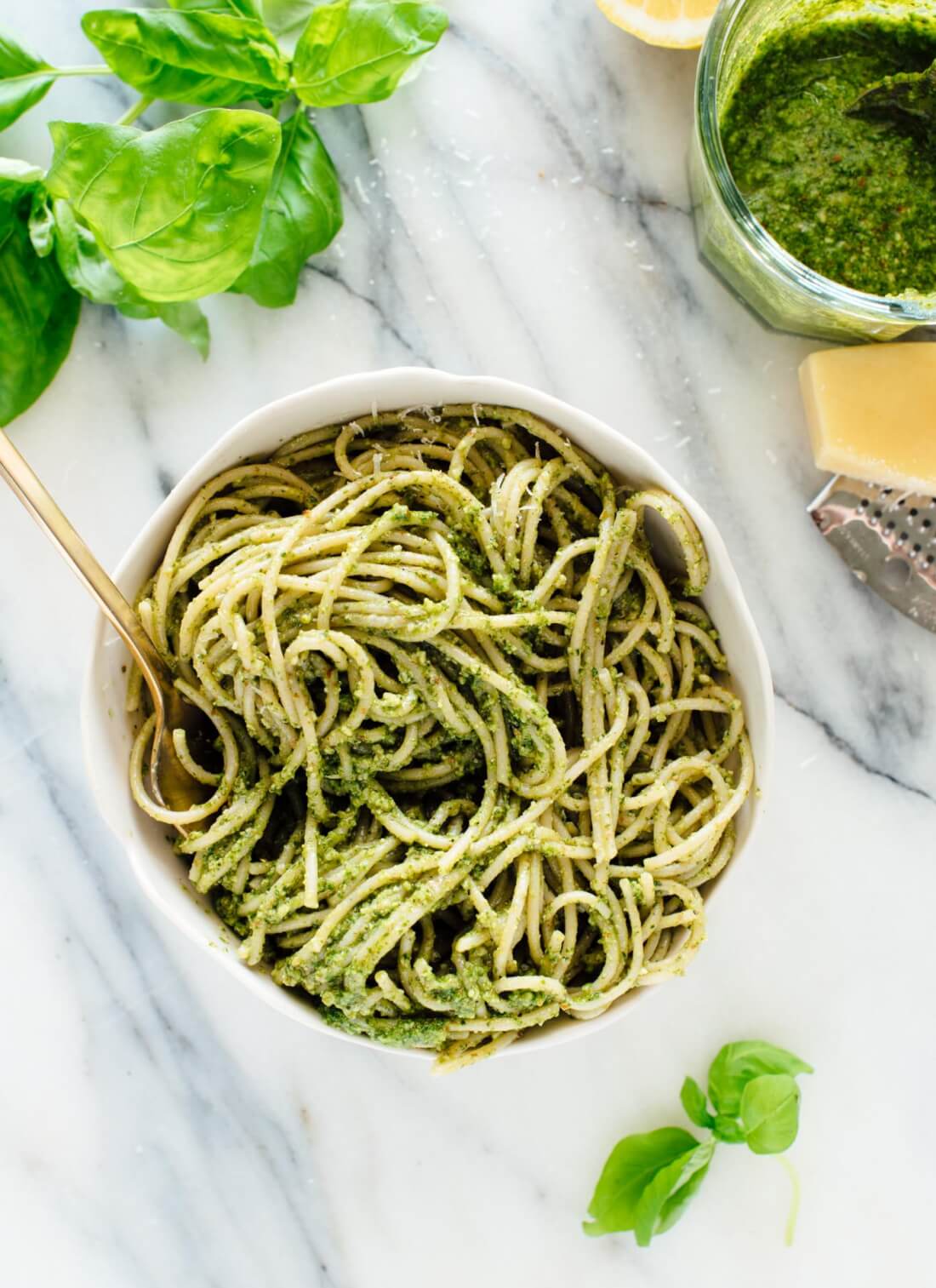It’s hot outside, so let’s to talk about basil pesto! Have you made it yet? Pesto is one of my absolute favorite, ultra-flavorful sauces. Great pesto tastes fresh, herbal, nutty, garlicky and luxurious, all at once. Today, I’m sharing my favorite pesto recipe and my best pesto tips.
Homemade pesto is infinitely more tasty than store-bought varieties. While pesto always seems fancy and gourmet, homemade pesto is very easy to make in your food processor or blender. Pesto originated in Liguria, Italy, where pesto is made in a mortar and pestle. (In fact, “pestâ” means “to pound.”) I don’t have the patience to crush basil by hand, one handful at a time. So, I recommend using your food processor.
Watch How to Make Pesto
Uses for Classic Basil Pesto
You can serve pesto on:
Pasta: Generally speaking, the best pasta shapes for pesto are thin spaghetti or angel hair, twisted shapes like fusilli, and bow-ties. Zucchini noodles Pizza Sandwiches Basically anything that could benefit from a jolt of fresh basil sauce!
Basil Pesto Ingredients
Traditional pesto alla genovese is made simply with basil, pine nuts, Parmesan, garlic, salt and olive oil. I often change up the nuts and add a squeeze of lemon juice. Read on to learn why!
Fresh Basil
Pesto is the perfect use for your summer garden basil surplus. Don’t have a garden? My favorite sources for affordable fresh basil are the farmers’ market, Trader Joe’s, or those little basil plants (“living basil” or potted) from grocery stores. Kenji from Serious Eats says you can use frozen basil leaves. If you ever have extra basil leaves—rinse, dry, and put them in a freezer bag for future pesto!
Pine Nuts or Other Nuts/Seeds
Pine nuts are the traditional choice (did you know they’re actually pine cone seeds?). Pine nuts are tender, buttery and high in fat, so they yield smoother, silkier pesto. On the downside, pine nuts are prohibitively expensive. I save money by using raw almonds, walnuts, pecans or pepitas instead. Almonds are the most neutral option, so I used them for the pesto you see here. They’re all delicious in their own way, though. I typically toast the nuts first to really bring out their flavor and add an extra-savory edge to the pesto.
Parmesan
Parmesan is salty and creamy, and tones down the anise flavor of the basil. You can use Pecorino Romano for a more prominent cheesy flavor. Technically, Parmesans usually are not vegetarian (they contain animal rennet), but Whole Foods and BelGioioso offer vegetarian varieties. If you’re vegan or dairy free, you can use a smaller amount of nutritional yeast instead (see recipe note). Sometimes, if I’m in the mood for extra-bold pesto, I just leave it out altogether or sprinkle vegan Parmesan cheese on my finished dish, to taste.
Garlic
Garlic is a traditional component that livens up the pesto with aromatics and makes it taste a whole lot more interesting. Don’t skip it.
Lemon Juice
I always add a bit of lemon juice to my pesto to brighten up the flavor without adding more salt. It’s optional, but I think you’ll like it!
Salt
Salt amps up all the other flavors and reduces the bitterness of the basil.
Extra-Virgin Olive Oil
Extra-virgin olive oil is the highest quality and comes from the first pressing of the olives. My favorite brands are California Olive Ranch and Trader Joe’s Kalamata olive oil.
Make it nut free: Use pine nuts, pepitas or sunflower seeds. (Pine nuts are technically seeds, but if you’re allergic to nuts, there’s a chance you’ll be allergic to pine nuts, too.) Parmesan note: Most Parmesans are not technically vegetarian (they contain animal rennet), but Whole Foods 365 and BelGioioso brands offer vegetarian Parmesan cheese. How to toss pesto with pasta: Before you drain your pasta, place a liquid measuring cup in the sink. Then, pour about 1 cup of the pasta cooking water into the measuring cup before you drain off the rest of the water. That pasta cooking water is pure gold—it contains starches that create a creamy emulsion and help attach the sauce to the pasta. Off the heat, toss pasta, pesto and small splashes of pasta cooking water together until you’re satisfied with the consistency (I used roughly ⅓ cup reserved pasta cooking water for ½ pound of spaghetti).




